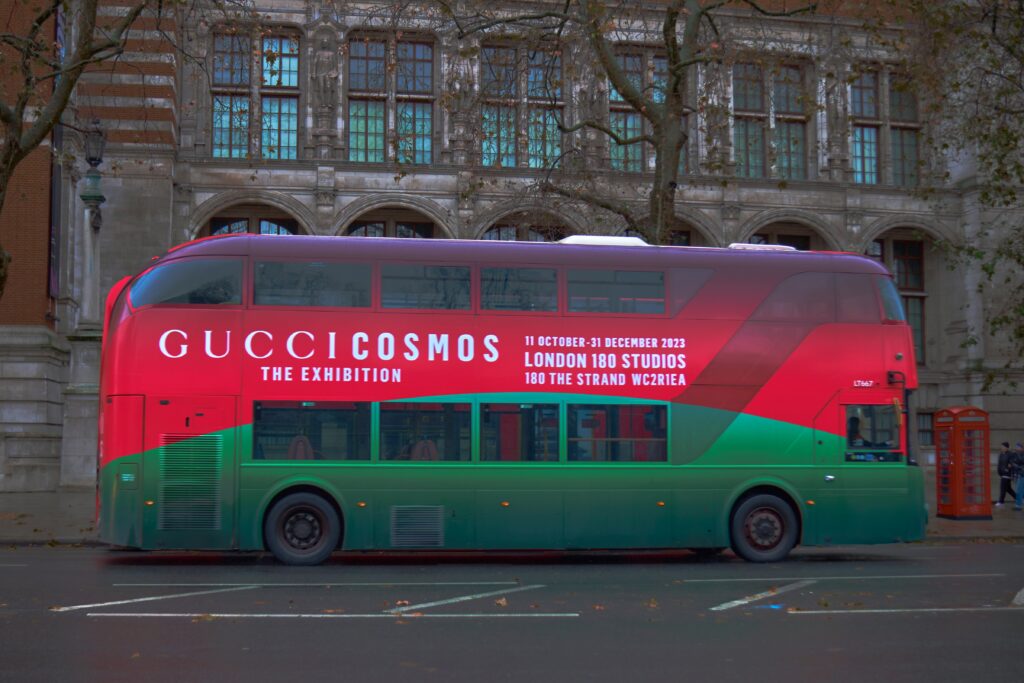
Remember QR code scavenger hunts? Or those massive VR event experiences everyone was talking about a few years back? Yeah, not everything that makes a splash sticks around. The event marketing world moves fast, and what worked last year might already be gathering dust.
That’s the tricky thing about event marketing trends. Some revolutionize how brands connect with audiences, while others burn through marketing budgets faster than free coffee at a trade show. But here’s the good news: you don’t need to chase every shiny object. Smart marketers know the difference between a passing fad and a genuine evolution.
Below, we’re cutting through the hype to show you which event marketing trends are actually gaining traction in 2025 (and which ones are quietly being shown the exit). No marketing speak, no buzzword bingo…though, that does sound fun. Just practical insights to help you invest your resources where they’ll actually drive results.
Let’s separate the signal from the noise.
The Event Marketing Landscape in 2025
Post-pandemic, event marketing hasn’t just recovered—it’s completely transformed. We’ve moved from the either/or thinking of “virtual versus in-person” to a fancy blend of approaches tailored to specific audience needs.
The biggest shift is budget allocation. Brands are investing more strategically, with most now spreading resources across multiple smaller, targeted activations rather than betting big on a few marquee events. The data backs this up. Engagement metrics show audiences prefer these more intimate, relevant experiences over generic large-scale ones.
Consumer expectations have evolved too. Today’s attendees demand personalization, sustainability, and genuine value. They’ll happily skip your event if it feels like a thinly veiled sales pitch. The most successful brands are responding by creating experiences that feel less like marketing and more like meaningful moments that happen to feature their products.
The winners in this landscape aren’t the ones with the biggest budgets. They’re the ones reading the room correctly.
Event Marketing Trends
1. HOT: Hybrid Event Experiences
Remember when “hybrid” just meant awkwardly streaming a physical event to bored people on laptops? Those days are gone. Today’s hybrid experiences are advanced ecosystems where virtual and in-person elements actually enhance each other.
The most successful brands are creating layered experiences where physical attendees interact with virtual participants in real-time. Think interactive walls displaying live comments from remote viewers, or virtual attendees controlling physical elements at the event space. This isn’t just accommodating both audiences—it’s creating something better because of their interaction.
It’s about inclusion without compromise. Not everyone can attend in person due to budget, schedule, or location constraints. Smart hybrid design means remote participants get a distinct but equally valuable experience.
NOT: Generic Virtual Event Platforms
Meanwhile, those cookie-cutter virtual event platforms that exploded during the pandemic are fading fast. You know the ones…glorified webinars with cheesy virtual lobbies and avatars nobody uses.
People have developed a serious case of Zoom fatigue, and basic screen-sharing just doesn’t cut it anymore.
If budget constraints limit your in-person options, focused micro-virtual events with genuine interaction still work. But those massive digital conference platforms are quickly becoming the marketing equivalent of a flip phone.
2. HOT: AI-Powered Personalization
The days of handing everyone the same branded tote bag are over. AI-powered personalization has transformed what’s possible in event marketing, creating experiences that adapt in real-time to individual preferences.
Leading brands are using AI to customize everything from entry sequences to product demonstrations. Imagine attendees receiving personalized agendas based on their interests, or digital displays that change content as different people approach. Some events are even using emotion recognition to gauge audience response and adjust presentations accordingly.
NOT: One-Size-Fits-All Event Experiences
When everyone gets the same scripted demonstrations, identical swag, and uniform messaging regardless of their interests or needs, nobody feels specially addressed.
Brands still relying solely on demographic targeting (all millennials want this, all executives want that) are seeing declining ROI, with conversion rates dropping compared to personalized approaches.
The warning signs your event lacks adequate personalization? High bounce rates, low engagement with follow-up materials, and that uncomfortable silence when staff ask attendees what they thought. Today’s consumers expect brands to do their homework, and they can tell when you’re just going through the motions.
3. HOT: Sustainability-Focused Event Marketing
Sustainability has moved from nice-to-have to absolutely essential in event marketing. Today’s consumers aren’t just preferring eco-conscious brands—they’re actively avoiding those perceived as environmentally careless.
The most innovative companies are reimagining every aspect of their events through a sustainability lens. Think biodiesel-powered promotional vehicles, zero-waste product sampling, digital-only materials, and locally-sourced everything. Some brands are even making carbon neutrality part of their event messaging, turning sustainability into a feature rather than an obligation.
Leading brands are tracking and sharing specific metrics: gallons of water saved, pounds of waste diverted, carbon offset quantities. This level of accountability resonates with increasingly eco-savvy audiences who can spot superficial “green” efforts a mile away.
NOT: Wasteful Event Practices
On the flip side, events characterized by excessive waste are facing serious backlash. Those mountains of plastic swag, single-use decorations, and gas-guzzling activation vehicles aren’t just environmentally harmful…they’re becoming reputation liabilities.
Instead of traditional high-waste elements, forward-thinking companies are embracing digital takeaways, experience-based giveaways, and rental or reusable event infrastructure. The message is clear: if your event marketing strategy still includes thousand-count orders of plastic keychains, it’s time for a reset.
4. HOT: Micro-Events and Targeted Activations
The era of “go big or go home” is giving way to something more strategic: highly targeted micro-events designed for specific audience segments. Instead of one massive activation hoping to appeal to everyone, brands are creating series of smaller, more intimate experiences tailored to distinct customer groups.
What makes this approach powerful is its precision. A financial services company might host a targeted workshop for first-time homebuyers in one neighborhood and a completely different investment seminar for retirees across town—each perfectly calibrated to address specific needs rather than broadly appealing to neither.
NOT: Massive One-Size-Fits-All Activations
However, those enormous generic brand events (the ones trying to be everything to everyone) are seeing rapidly diminishing returns. These budget-gobbling activations typically suffer from watered-down messaging and superficial engagement as they strain to appeal across diverse audiences.
For brands still investing heavily in this approach, the path forward involves strategic fragmentation. Rather than one $500,000 generic activation, progressive brands are creating five $100,000 targeted experiences—each with distinct objectives, audiences, and success metrics.
The result is higher total engagement, better qualified leads, and more efficient use of marketing dollars.
5. HOT: Better Mobile Experiences
Today’s winning mobile activations are immersive, tech-forward experiences that bring brands to life in ways that stop people in their tracks.
The most innovative companies are integrating technologies like projection mapping that transforms vehicle exteriors into moving digital canvases. Others are creating modular vehicle designs with expandable walls that triple available space when parked. Some are even incorporating localized AR elements that change the experience based on where the vehicle is deployed.
The mobility factor remains the killer advantage. While fixed locations hope customers will come to them, these next-gen mobile experiences strategically position themselves where specific audience segments already gather.
NOT: Basic Brand Vehicles Without Interactive Elements
Basic wrapped vehicles with generic brand messaging are increasingly invisible to consumers. The branded bus that just sits there? The wrapped truck with nothing but product displays? They’re generating about as much excitement as a roadside billboard…which is to say, very little.
The good news is that existing mobile assets can be upgraded without complete replacement. Adding interactive touch screens, deploying brand ambassadors with tablet-based activities, or creating simple but engaging photo opportunities can turn a passive display into an active experience. Even QR codes linking to location-specific digital experiences can breathe new life into otherwise static vehicles.
Moving Ahead: Putting Trends into Action
The event marketing landscape keeps changing, but one thing remains clear: creating meaningful, personal connections is what truly matters. The winning approaches (hybrid experiences, AI personalization, sustainability, micro-targeting, and enhanced mobile marketing) share a common thread: they put audience needs first rather than broadcasting generic messages.
As you plan your next campaign, focus less on checking trend boxes and more on creating experiences that genuinely resonate with your specific audience. Remember, the most effective trend is the one that works for your unique brand and customers.
Creative Coach Solutions has been helping brands navigate the evolving event marketing landscape for nearly two decades. From cutting-edge vehicle customizations to strategic campaign planning, we can help turn these trends into tangible results for your brand. Let’s create something your audience won’t forget.

